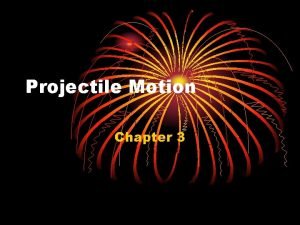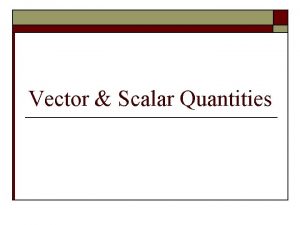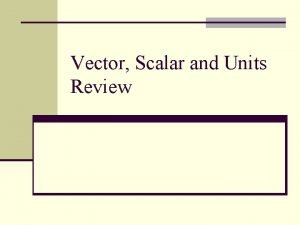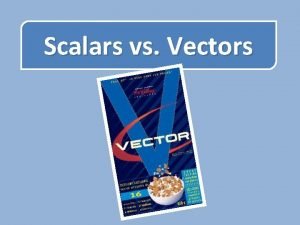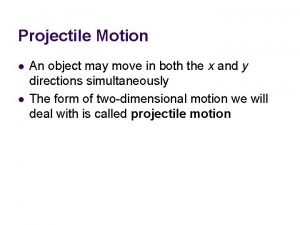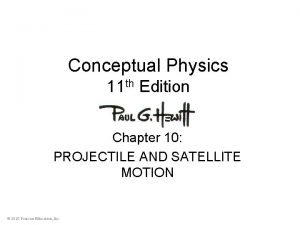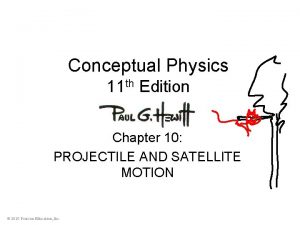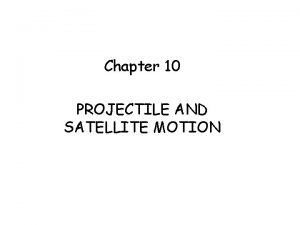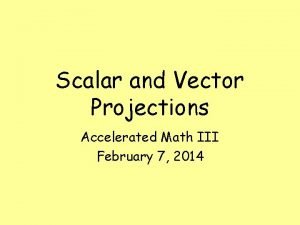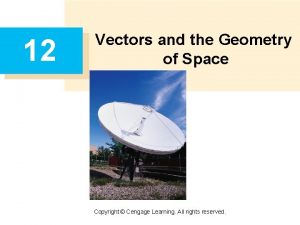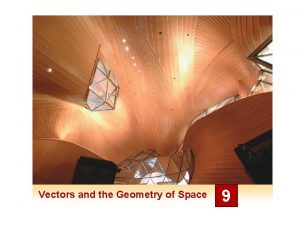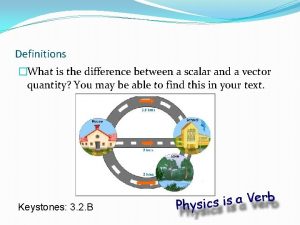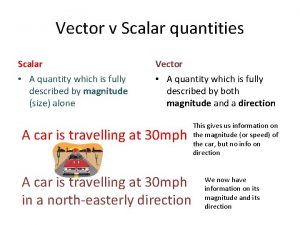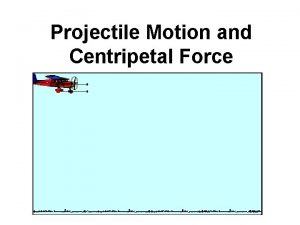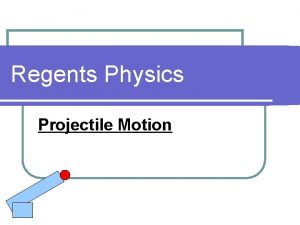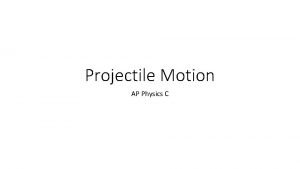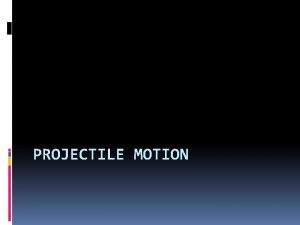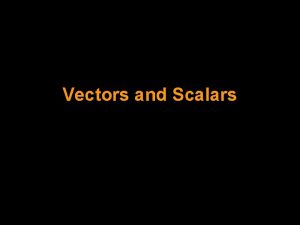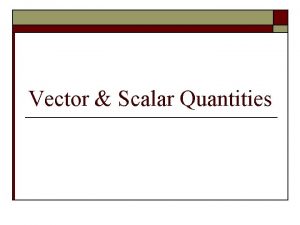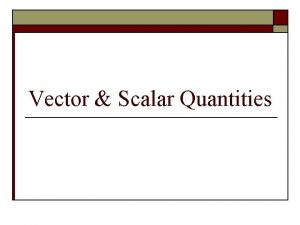Projectile Motion Chapter 3 Vector and Scalar Quantities

















- Slides: 17

Projectile Motion Chapter 3

Vector and Scalar Quantities • Vector Quantity – Requires both magnitude and direction • Velocity and Acceleration = vector quantities • Scalar Quantity – Requires magnitude only • Scalars can be added, subtracted, multiplied and divided like normal numbers

Velocity Vectors • An arrow is used to represent magnitude and direction of a vector quantity • These arrows may be combined (as in combining two or more velocities) • These are very useful when we get an object (airplane) moving a certain velocity and another (wind) moving at a different velocity

Vector Addition

Components of Vectors • Any vector can be “resolved” into two component vectors at right angles to each other • The process of determining the components of a vector is called resolution

Vector Components

Vector Components

Projectile Motion • Projectiles near the surface of Earth follow a curved path • This path is relatively simple when viewed from its horizontal and vertical component separately • The vertical component is like the free fall motion we already covered • The horizontal component is completely independent of the vertical component • These two independent variables combined make a curved path!

Projectile Motion

Projectile Motion No Gravity With Gravity

Projectile Motion

The Plane and the Package

Upwardly Launched Projectiles • Toss a projectile into the air at some angle; without gravity, the projectile would keep moving further away in a straight-line path • Instead, the projectile is found directly below that point (d = 5 t² to be exact) • Remember that there is no horizontal acceleration, so the projectile always moves equal horizontal distances in equal times • The projectile always lands at the same angle that it was released at

Upwardly Launched Projectiles

Fast-Moving Projectiles —Satellites • What if a ball were thrown so fast that the curvature of Earth came into play? • If the ball was thrown fast enough to exactly match the curvature of Earth, it would go into orbit • Satellite – a projectile moving fast enough to fall around Earth rather than into it (v = 8 km/s, or 18, 000 mi/h) • Due to air resistance, we launch our satellites into higher orbits so they will not burn up

Satellites Launch Speed less than 8000 m/s Projectile falls to Earth Launch Speed equal to 8000 m/s Projectile orbits Earth - Circular Path Launch Speed less than 8000 m/s Projectile falls to Earth Launch Speed greater than 8000 m/s Projectile orbits Earth - Elliptical Path

Assignment • Read Chapter 3 (pg. 28 -39) • Do Chapter 3 Assessment #1946 (pg. 41 -42) • Do Appendix F, Ch. 3 #1 -14 (pg. 663 -665)
 Is projectile motion a scalar or vector
Is projectile motion a scalar or vector What is the difference between scalar and vector quantity
What is the difference between scalar and vector quantity Difference between scalar and vector
Difference between scalar and vector What are scalar and vector quantities
What are scalar and vector quantities 50 examples of scalar and vector quantities
50 examples of scalar and vector quantities Vector vs scalar
Vector vs scalar Scalar versus vector quantities
Scalar versus vector quantities Motion map examples
Motion map examples Non symmetric projectile motion
Non symmetric projectile motion Angular vs linear velocity
Angular vs linear velocity Conceptual physics chapter 5 projectile motion answers
Conceptual physics chapter 5 projectile motion answers Chapter 10 projectile and satellite motion tossed ball
Chapter 10 projectile and satellite motion tossed ball Chapter 10 projectile and satellite motion tossed ball
Chapter 10 projectile and satellite motion tossed ball Difference between vectors and scalars
Difference between vectors and scalars Scalar projection vs vector projection
Scalar projection vs vector projection Dot product
Dot product Vectors and the geometry of space
Vectors and the geometry of space Scalar and vector quantity difference
Scalar and vector quantity difference
